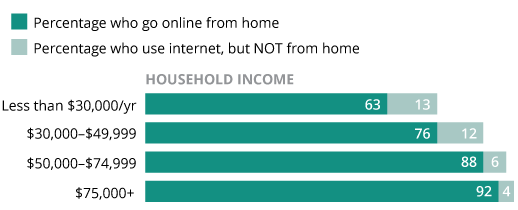According to a study in the US, 30% – 40% of the population can not get easy access to the internet in cities like New York, Baltimore, and Miami. Free Wi-Fi in public spaces is the first step to solving this problem.
We might think that almost everybody, in a developed country, has broadband access at home. However statistics underline the fact that still, a small part of the population can not afford this service.
The United States may be the location where the internet was invented and is the most used, yet it is also where the price of broadband access is the highest in the world. It costs more or less 55$ per month for broadband access of 25 Mbit/s, nearly double what residents in London, Seoul, and Bucharest pay. Residents in cities such as Hong Kong, Seoul, Tokyo and Paris get connections nearly eight times faster for the same price. The reason for the high US price is due to the limited competition in the broadband market, according to the FCC. Consequently, more than 730.000 homes in New York City have no broadband access because of the high price/low-income correlation (see graph).
 |
| Source: Huffingtonpost website |
Many people consider having Internet access a basic human right, mostly due to the fact that not having internet access at home can be a real disadvantage in everyday life. Many services offered by companies, local and state governments have been digitalized: internet banking, online registrations, job searches, travel purchases, apartment rentals, online purchases, online learning, to name a few. Nowadays, internet access is not only useful for easy access to services, but also as an efficient communication platform about culture and general information. Citizens affected by the digital divide in the US are losing economic, educational and social opportunities.
This is where free Wi-Fi in public spaces comes into play and helps reduce this digital divide. Despite not being able to replace home Wi-Fi access, it is essential for cities to guarantee internet access to its inhabitants in frequented public spaces, like libraries, schools, universities, malls, venuesetc. Not to mention , providing internet access in public spaces is now easier than it has ever been, thanks to cloud-based technology and the diversity of models of access points (indoor, outdoor, desktop, mountain ceiling…). With cloud management software, free or password-protected networks can now be easily set up in public spaces offering paid or free Wi-Fi, through a captive portal.
Wi-Fi in public spaces is an efficient solution for people without internet access at home. Not only to include into the digital society, but also to improve digital literacy. In the long-term, the objective is that, thanks to decrease in broadband access prices in the US, this solution be only a complementary service available with home broadband access.
| Source: PBS website |
Related articles:

